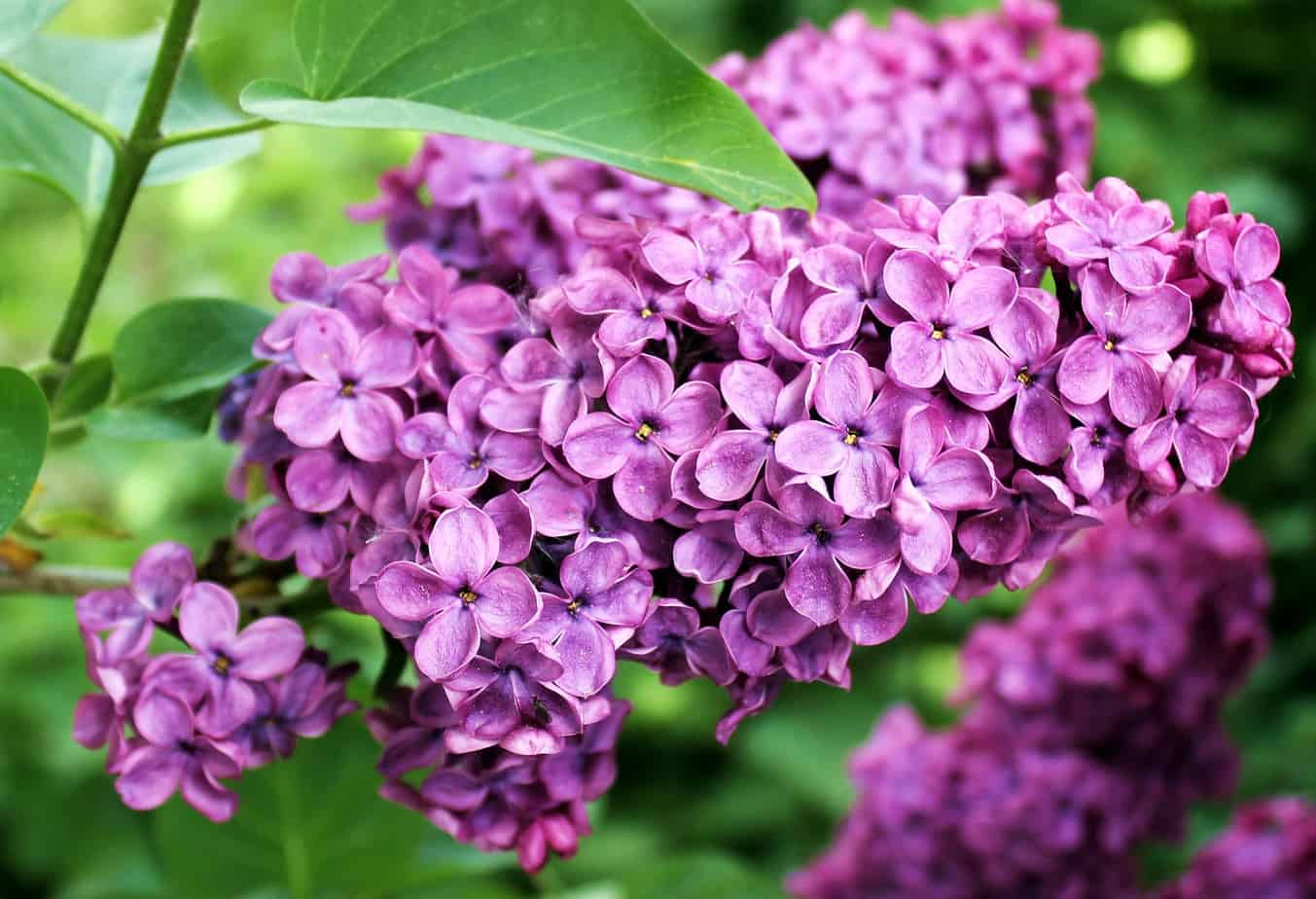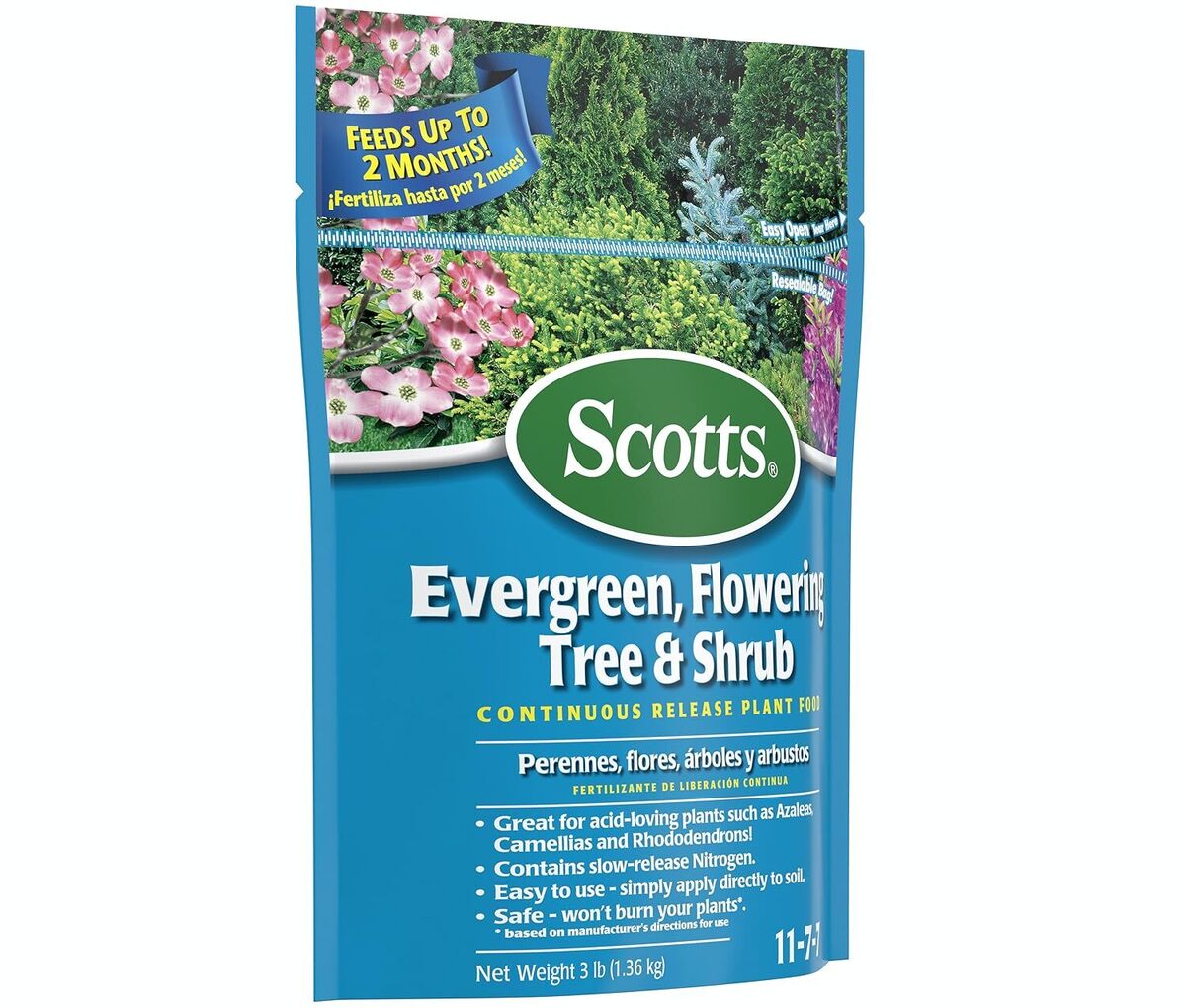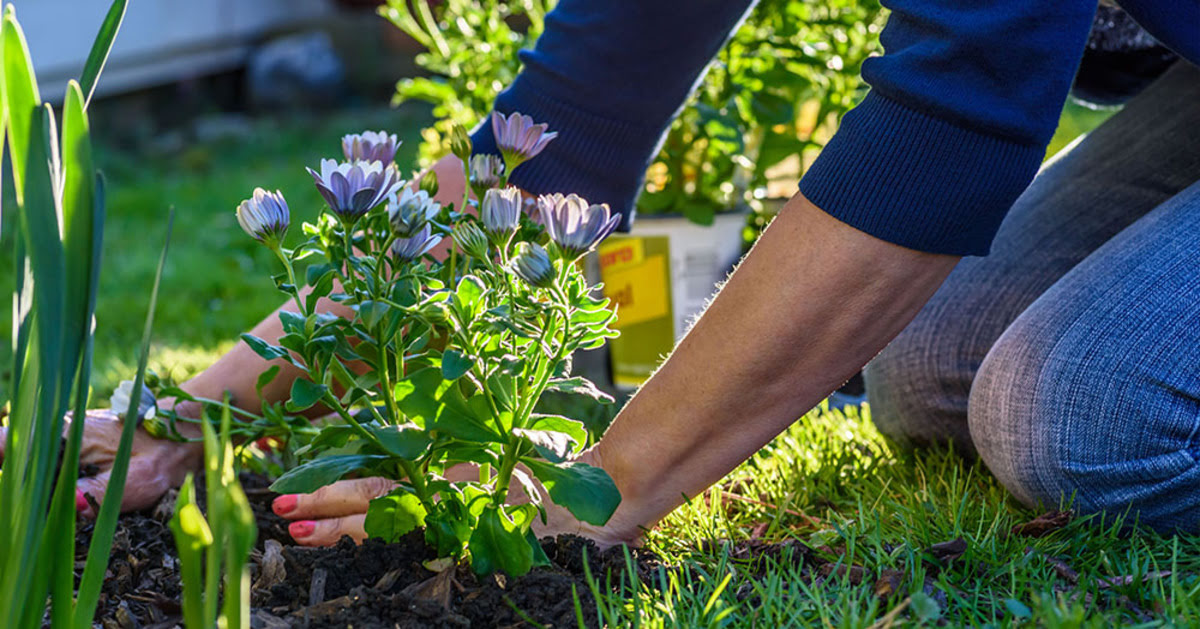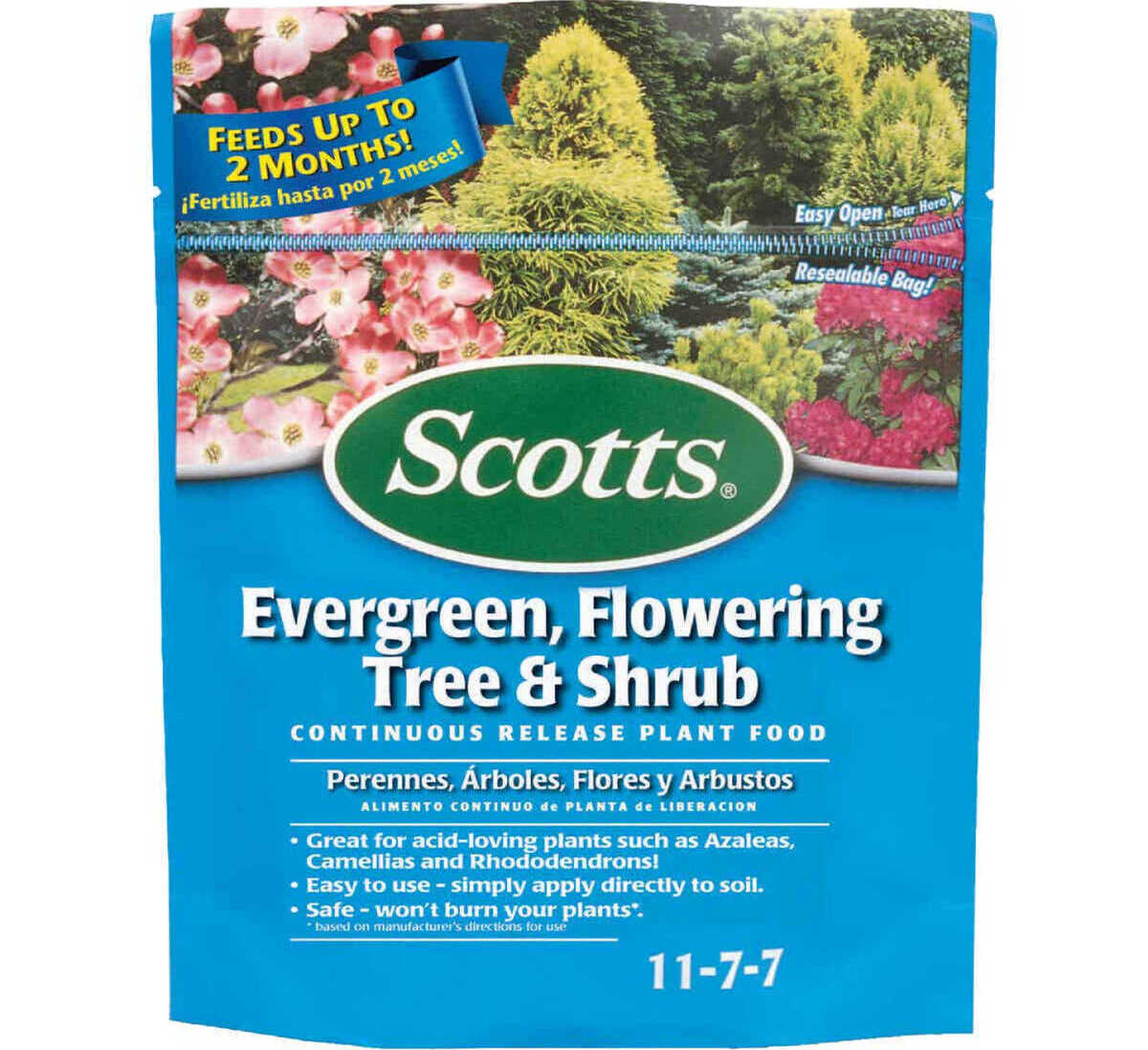Home>Gardening Techniques>Plant Care>How To Fertilize Evergreen Shrubs
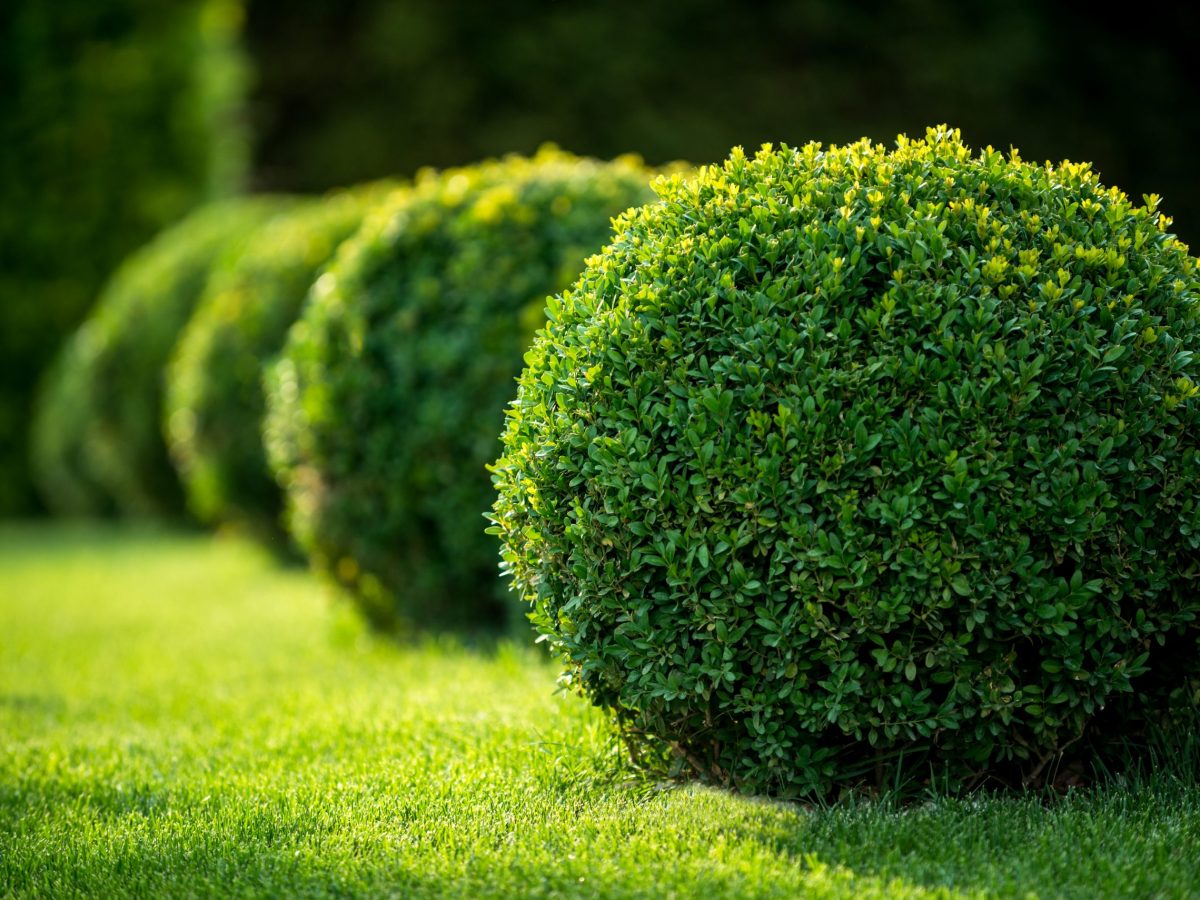

Plant Care
How To Fertilize Evergreen Shrubs
Modified: January 22, 2024
Learn the best plant care practices for fertilizing evergreen shrubs and ensure healthy growth. Discover expert tips and techniques for maximizing results.
(Many of the links in this article redirect to a specific reviewed product. Your purchase of these products through affiliate links helps to generate commission for Chicagolandgardening.com, at no extra cost. Learn more)
Table of Contents
Introduction
Welcome to the wonderful world of evergreen shrubs! Whether you’re a seasoned gardener or just starting out, these beautiful plants can add color, texture, and life to any landscape. But like any living organism, evergreen shrubs need care and attention to thrive. One key aspect of their care is proper fertilization.
In this article, we will explore the importance of fertilizing evergreen shrubs, as well as provide you with valuable tips and techniques on how to do it effectively. We’ll guide you through the process of choosing the right fertilizer, determining the optimal time for application, and prepping the shrubs for fertilization. Additionally, we’ll highlight common mistakes to avoid and offer insights on monitoring the effectiveness of the fertilizer.
By the end of this article, you’ll have a comprehensive understanding of how to fertilize evergreen shrubs, ensuring that your plants not only survive but thrive throughout the seasons. So let’s dive in and discover the secrets to maintaining healthy, vibrant evergreen shrubs!
Understanding Evergreen Shrubs
Before we delve into the world of fertilizing evergreen shrubs, it’s important to have a good understanding of what these plants are and how they differ from other types of shrubs. Evergreen shrubs are characterized by their ability to retain their leaves or needles year-round, providing an attractive backdrop in your garden even during the winter months.
Evergreen shrubs come in a wide range of sizes, shapes, and colors, making them a versatile choice for landscaping. From graceful holly bushes to compact boxwoods, there’s an evergreen shrub to suit every garden style and preference. They provide year-round interest and serve various purposes, such as creating privacy hedges, adding structure to your garden, and creating a lush backdrop for other plants.
One of the main benefits of evergreen shrubs is their ability to tolerate different soil conditions and climates. While some varieties prefer acidic soil or partial shade, others can withstand drought or extreme cold. This makes evergreen shrubs a popular choice for gardeners of all levels of experience.
It’s important to note that not all shrubs that retain their leaves throughout the year are evergreen. While broadleaf evergreen shrubs, such as rhododendrons and azaleas, have wide, flat leaves, there are also needled evergreen shrubs, including junipers and yews, which have needle-like foliage.
Understanding the unique characteristics and requirements of evergreen shrubs will help you make informed decisions when it comes to their care and maintenance. Now that we have a better grasp of what evergreen shrubs are, let’s move on to explore why fertilization is crucial for their health and vitality.
Why Fertilize Evergreen Shrubs?
Evergreen shrubs, like all plants, require essential nutrients to grow and thrive. While they have the ability to extract some nutrients from the soil, the nutrients can become depleted over time, especially in heavily cultivated or nutrient-poor soils. This is where fertilization plays a critical role.
By fertilizing evergreen shrubs, you provide them with a boost of essential nutrients that may be lacking in their surrounding soil. These nutrients include nitrogen, phosphorus, and potassium, as well as secondary nutrients like calcium, magnesium, and sulfur. Additionally, fertilizers often contain micronutrients, such as iron, manganese, and zinc, which are necessary for the proper development and function of the shrubs.
The benefits of fertilizing evergreen shrubs are numerous. Firstly, it enhances their overall health and vitality. The nutrients provided by fertilizers help promote vigorous growth, enhance leaf color, and improve foliage density. This results in visually appealing shrubs that become the focal point of your garden.
Secondly, fertilization improves the shrub’s ability to withstand harsh environmental conditions. Evergreen shrubs that receive adequate nutrients are better equipped to tolerate extreme temperatures, drought, and pests. They have a stronger root system, which enables them to absorb water and nutrients more efficiently, and they are more resilient against diseases and infections.
Furthermore, fertilization promotes the production of flowers and fruits in certain evergreen shrubs. Many gardeners cherish the beautiful flowers and colorful berries that these shrubs produce. By providing the appropriate nutrients through fertilization, you can encourage abundant blooming and fruiting, enhancing the visual appeal of your garden and attracting wildlife.
Lastly, fertilizing evergreen shrubs aids in their long-term sustainability. Regular fertilization replenishes the soil with nutrients that may have been depleted due to weathering or leaching. This ensures that the shrubs have a continuous supply of essential elements for their growth and development, ultimately extending their lifespan.
Now that we understand the importance of fertilizing evergreen shrubs, let’s move on to the next step – choosing the right fertilizer for your specific shrubs.
Choosing the Right Fertilizer
When it comes to selecting the right fertilizer for your evergreen shrubs, it’s important to consider their specific nutrient needs and the characteristics of your soil. The three primary nutrients found in fertilizers are nitrogen (N), phosphorus (P), and potassium (K), often referred to as NPK. These nutrients are represented by numbers on fertilizer packaging, such as 10-10-10 or 20-5-10, indicating the percentage of each nutrient in the fertilizer.
The nutrient requirements of evergreen shrubs vary depending on the stage of growth, the plant species, and the soil composition. To determine the specific needs of your shrubs, it’s best to perform a soil test. A soil test will analyze the nutrient levels and pH of your soil, helping you understand what nutrients may be lacking or excessive. This information will guide you in choosing the appropriate fertilizer.
In general, evergreen shrubs benefit from a balanced fertilizer with equal or slightly higher amounts of nitrogen and phosphorus. Nitrogen promotes lush foliage growth, while phosphorus aids in root development and overall plant health. Potassium is essential for regulating water movement in the shrub and enhancing disease resistance.
Organic fertilizers are a popular choice for those seeking a natural and eco-friendly option. These fertilizers are derived from plant or animal sources and release nutrients slowly over time. They improve soil structure and microbial activity, making them suitable for long-term soil health and overall plant well-being.
However, synthetic fertilizers (chemical fertilizers) are also widely used and effective. They are formulated with precise nutrient ratios and are readily available for immediate plant uptake. If you opt for synthetic fertilizers, be sure to follow the application instructions carefully to avoid over-fertilization, which can be detrimental to the shrubs and the environment.
When applying fertilizer, consider using a slow-release formulation. Slow-release fertilizers provide a gradual and sustained release of nutrients over an extended period. This allows for better absorption by the shrubs and reduces the risk of nutrient runoff or leaching.
Ultimately, the most suitable fertilizer for your evergreen shrubs depends on your unique requirements, the characteristics of your soil, and your personal gardening philosophy. Whether you choose organic or synthetic fertilizers, the key is to select a fertilizer that provides the necessary nutrients in a balanced and sustainable manner.
Now that we’ve discussed how to choose the right fertilizer, let’s move on to the best timing for fertilizing your evergreen shrubs.
When to Fertilize Evergreen Shrubs
Timing is crucial when it comes to fertilizing evergreen shrubs. Applying fertilizer at the right time ensures that the nutrients are available when the shrubs need them the most. In general, it’s best to fertilize evergreen shrubs during their active growing season, typically in the spring and fall.
Spring is an ideal time to fertilize evergreen shrubs because they are emerging from their dormant period and starting to engage in new growth. Applying fertilizer in early spring provides a nutrient boost that supports healthy foliage development and overall plant vigor. It’s important to apply the fertilizer before the shrubs begin to produce new growth, as this is when they have the highest nutrient requirements.
The fall season is another opportune time to fertilize evergreen shrubs. Applying fertilizer in late fall helps the shrubs build up nutrient reserves before the winter months. This allows them to maintain their vitality during the dormant period and ensures a strong start when they resume active growth in the following spring.
When fertilizing evergreen shrubs, it’s important to avoid fertilizing during extremely hot or dry weather. High temperatures and lack of moisture can stress the plants, and the fertilizer may cause more harm than good. It’s also advisable to refrain from fertilizing shrubs during the winter months, as they are typically in a dormant state and do not require additional nutrients.
It’s worth noting that some evergreen shrubs have specific fertilizer requirements and may benefit from additional feedings throughout the growing season. For example, acid-loving evergreen shrubs like azaleas and rhododendrons may benefit from an additional light application of fertilizer in late spring or early summer to promote vibrant blooms.
Observing the growth patterns and health of your evergreen shrubs will also assist in determining the best time to fertilize. If the foliage appears pale, growth is stunted, or the shrubs seem to be lacking vigor, it may be an indication that they require a nutrient boost.
By timing your fertilizer applications appropriately, you provide your evergreen shrubs with the necessary nutrients to support their growth and ensure their long-term health. Now that we know when to fertilize, let’s move on to the next step – preparing the shrubs for fertilization.
Preparing the Shrubs for Fertilization
Before applying fertilizer to your evergreen shrubs, it’s essential to prepare them properly. Taking the time to prepare the shrubs ensures that the nutrients can be effectively absorbed by the roots and maximizes the benefits of fertilization. Here are some steps to follow when preparing your shrubs for fertilization.
1. Clear the area around the shrubs: Remove any weeds, debris, or fallen leaves from around the base of the shrubs. This creates a clean and open area for the fertilizer application and prevents competing plants from taking up the nutrients intended for the shrubs.
2. Loosen the soil: Gently loosen the top layer of soil around the shrubs using a garden fork or a hand cultivator. This helps the roots access the nutrients more easily and improves the absorption of the fertilizer.
3. Water the shrubs: Before applying the fertilizer, thoroughly water the shrubs. Adequate moisture in the soil ensures that the nutrients can dissolve and be absorbed by the shrub’s roots. It’s important to water deeply, allowing the water to penetrate the root zone.
4. Consider soil amendments: If your soil is deficient in organic matter or has poor drainage, it may be beneficial to incorporate compost or well-rotted manure into the soil. This improves soil structure, enhances nutrient-holding capacity, and promotes healthy root development.
5. Assess the shrub’s overall health: Take a moment to evaluate the condition of your evergreen shrubs. Look for any signs of stress, such as yellowing or wilting foliage, pests or diseases, or nutrient deficiencies. Address any issues before fertilizing to ensure that the shrubs are in the best possible condition to receive the nutrients.
6. Follow fertilization guidelines: Read the instructions provided on the fertilizer packaging carefully. Note the recommended application rates and methods. Applying too much fertilizer can burn the roots and harm the shrubs, while applying too little may not provide the desired results.
By properly preparing your evergreen shrubs for fertilization, you create an optimal environment for the nutrients to be absorbed and utilized. This sets the foundation for healthy growth and ensures that the fertilizer can effectively support the shrubs’ overall well-being. Now that we have prepared the shrubs, let’s move on to the next step – applying the fertilizer.
Applying the Fertilizer
Now that you’ve prepared your evergreen shrubs for fertilization, it’s time to apply the fertilizer. Applying the fertilizer correctly ensures that the nutrients are distributed evenly and absorbed by the roots. Here are the steps to follow when applying the fertilizer to your shrubs.
1. Measure the fertilizer: Carefully measure the recommended amount of fertilizer according to the instructions on the packaging. Use a scale or measuring cup to ensure accuracy. It’s crucial not to overapply the fertilizer, as this can lead to nutrient imbalances and damage the shrubs.
2. Spread the fertilizer evenly: Start by placing the fertilizer evenly around the base of the shrub, keeping the granules or pellets a few inches away from the trunk. Avoid piling the fertilizer directly against the stems, as this can cause burning or rotting. For larger shrubs, you can create multiple fertilizer application points around the dripline, which is the outer edge of the shrub’s foliage canopy.
3. Incorporate the fertilizer into the soil: Gently rake or hand cultivate the soil to incorporate the fertilizer into the top layer. Be careful not to disturb the shrub’s roots or cause any damage. This step helps the fertilizer come into contact with the roots for efficient nutrient absorption.
4. Water the shrubs: After applying the fertilizer, thoroughly water the shrubs again. This helps the fertilizer dissolve and seep into the soil, making it accessible to the roots. It also prevents the granules from sitting on the foliage and potentially causing damage.
5. Clean up any excess fertilizer: If any fertilizer granules accidentally land on the shrub’s foliage or surrounding areas, gently brush them off or rinse them away with water. Excess fertilizer on the foliage can cause burning and discoloration.
6. Follow up with additional watering: In the days following fertilization, make sure to provide regular watering to keep the soil consistently moist. This aids in the optimal absorption of nutrients by the shrubs’ roots.
It’s important to note that some fertilizer formulations may require specific application techniques. For example, slow-release fertilizers may need to be lightly scratched into the soil surface, while liquid fertilizers may need to be diluted and applied with a sprayer. Always refer to the instructions provided by the fertilizer manufacturer for best results.
By properly applying the fertilizer to your evergreen shrubs, you ensure that the nutrients are delivered effectively to support their growth and overall health. Now that we’ve covered the application process, let’s explore some common mistakes to avoid when fertilizing evergreen shrubs.
Avoiding Common Mistakes
Fertilizing evergreen shrubs may seem like a simple task, but there are common mistakes that gardeners often make. By being aware of these mistakes, you can ensure that you are providing your shrubs with the best care possible. Here are some common mistakes to avoid when fertilizing evergreen shrubs:
1. Over-fertilizing: Applying too much fertilizer can harm your evergreen shrubs. It can lead to excessive foliage growth, weak stems, and an imbalance of nutrients. Follow the recommended application rates and avoid the temptation to apply more fertilizer than necessary.
2. Under-fertilizing: Conversely, under-fertilizing your shrubs can result in nutrient deficiencies and poor growth. Make sure to apply the appropriate amount of fertilizer based on your specific shrub’s requirements and the recommendation on the fertilizer packaging.
3. Fertilizing at the wrong time: Timing is crucial when it comes to fertilization. Avoid fertilizing during periods of extreme temperatures or dry spells. Fertilizing during these times can stress the shrubs and cause damage. Stick to the recommended spring and fall fertilization schedules to support healthy growth.
4. Failing to conduct a soil test: Without a soil test, you may be unaware of the nutrient deficiencies or imbalances in your soil. Conducting a soil test allows you to understand the specific needs of your evergreen shrubs and choose the appropriate fertilizer for optimal results.
5. Applying fertilizer too close to the trunk: It’s important to avoid placing the fertilizer directly against the stem or trunk of the shrub. This can lead to burning or rotting of the plant tissue. Always keep the fertilizer a few inches away from the base of the shrub to prevent any damage.
6. Neglecting to water properly: Watering is crucial for the proper absorption of nutrients by the shrubs’ roots. After applying the fertilizer, make sure to water the shrubs thoroughly. Additionally, provide regular watering in the following days to keep the soil consistently moist.
7. Ignoring the specific needs of different shrub species: Different evergreen shrubs may have varying nutrient requirements. Some may prefer acidic soil, while others may require a more balanced pH. It’s important to research and understand the specific needs of your shrubs to provide the best fertilization regimen for their health and growth.
By avoiding these common mistakes, you can ensure that your evergreen shrubs receive the right amount of fertilizer at the right time, maximizing their health and beauty. Next, let’s explore how to monitor the effectiveness of the fertilizer.
Monitoring the Effectiveness of Fertilizer
After fertilizing your evergreen shrubs, it’s important to monitor the effectiveness of the fertilizer to ensure that it is providing the desired results. Monitoring allows you to make any necessary adjustments and optimize the care for your shrubs. Here are some ways to monitor the effectiveness of the fertilizer:
1. Visual observation: Regularly inspect your evergreen shrubs for any changes in their growth, foliage color, or overall appearance. Look for signs of improved vigor, such as increased leaf density, vibrant foliage color, and healthier-looking branches. These are indications that the fertilizer is providing the necessary nutrients for optimal growth.
2. Flower and fruit development: If your evergreen shrubs are known to produce flowers or fruits, monitor their development after fertilization. Increased blooming or abundant fruiting can be a sign of successful fertilization. Be patient, as it may take some time for the shrubs to develop and display their blooms or fruits.
3. Soil testing: Conducting regular soil tests can provide insights into the nutrient levels and pH balance of the soil. By testing the soil, you can evaluate the effectiveness of the fertilizer and determine if any adjustments or additional applications are needed. Soil tests can be conducted annually or as recommended by your local extension office.
4. Growth rate: Keep an eye on the growth rate of your evergreen shrubs. Healthy and well-fertilized shrubs tend to exhibit vigorous growth. Monitor the rate at which the shrubs are growing and compare it to their growth in previous seasons. If the growth seems stunted or significantly slower than expected, it may be an indication that the shrubs require additional nutrients.
5. Pest and disease resistance: Fertilized evergreen shrubs often have better resistance to pests and diseases. Monitor the shrubs for any signs of pest infestations, such as discoloration, chewed leaves, or unusual wilting, as well as any indications of diseases, like spots or lesions. A well-nourished shrub is more capable of withstanding and recovering from these issues.
6. Leaf analysis: Periodically examine the leaves of your evergreen shrubs for any nutrient deficiencies or excesses. Look for signs of yellowing, browning, or unusual leaf coloration. This may indicate a nutrient imbalance that needs to be addressed through fertilization or adjustments to the fertilizer application.
By actively monitoring the effectiveness of the fertilizer, you can fine-tune your fertilization routine and ensure that your evergreen shrubs receive the nutrients they need for optimal health and vibrancy. Regular observation and assessment will help you make informed decisions to support the ongoing care and maintenance of your shrubs.
Now that we’ve explored how to monitor the effectiveness of the fertilizer, let’s summarize the key points we’ve covered throughout this article.
Conclusion
Fertilizing evergreen shrubs is a vital aspect of their care and maintenance. By providing the necessary nutrients, you can enhance their overall health, promote vigorous growth, and ensure their longevity. Understanding the specific needs of evergreen shrubs and choosing the right fertilizer are key to successful fertilization.
When fertilizing evergreen shrubs, it’s crucial to consider the timing and application techniques. Fertilize your shrubs during their active growing season, typically in spring and fall, while avoiding extreme weather conditions. Properly preparing the shrubs for fertilization by clearing the area, loosening the soil, and watering adequately sets them up for optimal nutrient absorption.
Choosing the right fertilizer involves selecting a balanced formulation and considering any specific requirements of your shrub species. Organic or synthetic fertilizers can both be effective options when used correctly. Applying the fertilizer evenly, avoiding direct contact with the stem, and incorporating it into the soil promotes efficient nutrient uptake.
Avoiding common mistakes such as over-fertilization, under-fertilization, and incorrect application practices is essential for the health of your shrubs. Monitoring the effectiveness of the fertilizer through visual observation, flower and fruit development, soil testing, growth rate, pest and disease resistance, and leaf analysis allows you to make adjustments and ensure your shrubs receive optimal nutrition.
In conclusion, fertilizing evergreen shrubs is a valuable practice that supports their growth, health, and beauty. By providing the right nutrients at the right time, you can enjoy vibrant and thriving evergreen shrubs that enhance the aesthetics and charm of your garden throughout the year.


